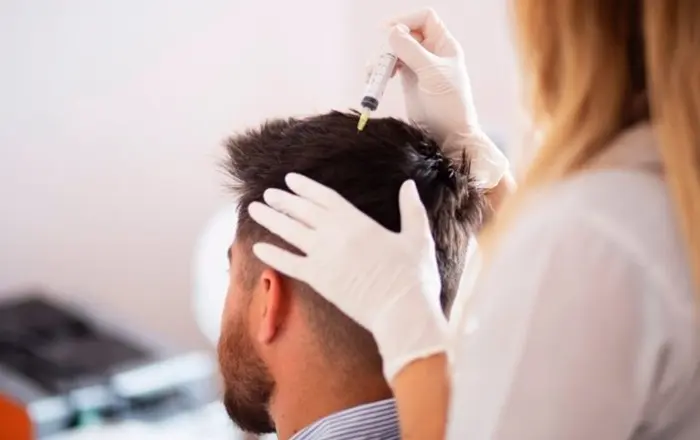Hair transplant surgery is a popular solution for individuals experiencing hair loss. This procedure involves moving hair follicles from a part of the body with ample hair (donor site) to a bald or thinning part (recipient site). While the results of hair transplants can be impressive, understanding the longevity of these results is crucial for anyone considering the procedure. This article will explore how long hair transplant effects can last, factors influencing their duration, and how to maintain results.
Understanding Hair Transplant Longevity
Initial Results
The immediate effects of a hair transplant may not be as apparent right after the surgery. Post-operative shedding is common, where the transplanted hairs fall out within the first few weeks. This is a normal part of the healing process, known as “shock loss.”
Growth Phase
After the initial shedding, new hair growth begins. Typically, new hair starts to appear within three to four months post-surgery. Patients often see substantial growth by six months, with final results evident after about 12 to 18 months.
Permanent Results
Hair transplants are generally considered permanent. The hair follicles transplanted from the donor area, typically the back of the head, are genetically resistant to balding. This resistance makes them unlikely to fall out like the hair from the original balding areas.
Factors Influencing Hair Transplant Longevity
Surgeon Expertise
The skill and experience of the surgeon performing the transplant significantly impact the longevity of the results. A highly skilled surgeon ensures the hair follicles are handled and implanted correctly, maximizing their survival rate.
Type of Hair Transplant
There are two primary types of hair transplants: Follicular Unit Transplantation (FUT) and Follicular Unit Extraction (FUE). Both methods are effective, but the choice of procedure may affect the outcome and longevity.
Follicular Unit Transplantation (FUT)
In FUT, a strip of scalp is removed from the donor area, and individual follicular units are dissected and transplanted to the recipient area. FUT may leave a linear scar but generally provides a high yield of transplanted hair.
Follicular Unit Extraction (FUE)
FUE involves extracting individual hair follicles directly from the donor area and transplanting them to the recipient area. FUE tends to have a quicker recovery time and leaves minimal scarring, making it a popular choice.
See Also: How Long Does Swelling Last Hair Transplant?
Patient’s Age and Health
Younger patients with a stable hair loss pattern may experience longer-lasting results compared to older patients with ongoing hair loss. Additionally, overall health and any underlying conditions can influence hair growth and transplant success.
Hair Care and Lifestyle
Post-surgery hair care and lifestyle choices can significantly affect the longevity of hair transplant results. Proper scalp care, avoiding smoking, reducing stress, and following a healthy diet all contribute to maintaining the health of transplanted hair.
Maintaining Hair Transplant Results
Post-Operative Care
Following the surgeon’s post-operative care instructions is crucial for optimal recovery and long-term results. This includes gentle hair washing, avoiding strenuous activities, and protecting the scalp from sun exposure.
Medical Treatments
Medications such as minoxidil (Rogaine) and finasteride (Propecia) can help maintain hair growth and prevent further hair loss. These treatments are often recommended alongside hair transplants to support long-term results.
Regular Check-Ups
Regular follow-up appointments with the hair transplant surgeon can help monitor the health of the transplanted hair and address any issues early on. These check-ups are essential for ensuring the longevity of the results.
Realistic Expectations
Natural Hair Growth Cycle
Understanding that hair grows in cycles is important. Even after a successful transplant, patients should be aware that hair shedding and regrowth are natural processes. The transplanted hair will follow a similar growth cycle to natural hair.
Potential for Further Hair Loss
While transplanted hair is resistant to balding, the natural hair surrounding the transplant site may continue to thin over time. In such cases, additional treatments or future transplants might be necessary to maintain a uniform appearance.
Case Studies and Long-Term Results
Case Study 1: A Decade-Long Follow-Up
A study published in the journal Dermatologic Surgery followed patients who had undergone hair transplants for ten years. The study found that the majority of patients retained a significant amount of their transplanted hair, with only minor thinning in some cases.
Case Study 2: Five-Year Evaluation
Another study conducted by the International Society of Hair Restoration Surgery (ISHRS) evaluated patients five years post-transplant. Results showed that patients continued to experience satisfactory hair density and coverage, with high levels of patient satisfaction.
Conclusion
The effects of a hair transplant can last a lifetime, provided the procedure is performed by a skilled surgeon, and patients adhere to recommended care and maintenance practices. While individual results may vary, most patients can expect to enjoy the benefits of their hair transplant for many years. Understanding the factors that influence longevity and committing to a healthy lifestyle are key to achieving and maintaining optimal results. For those considering a hair transplant, consulting with an experienced specialist and setting realistic expectations will ensure the best possible outcome.
Related topics:

